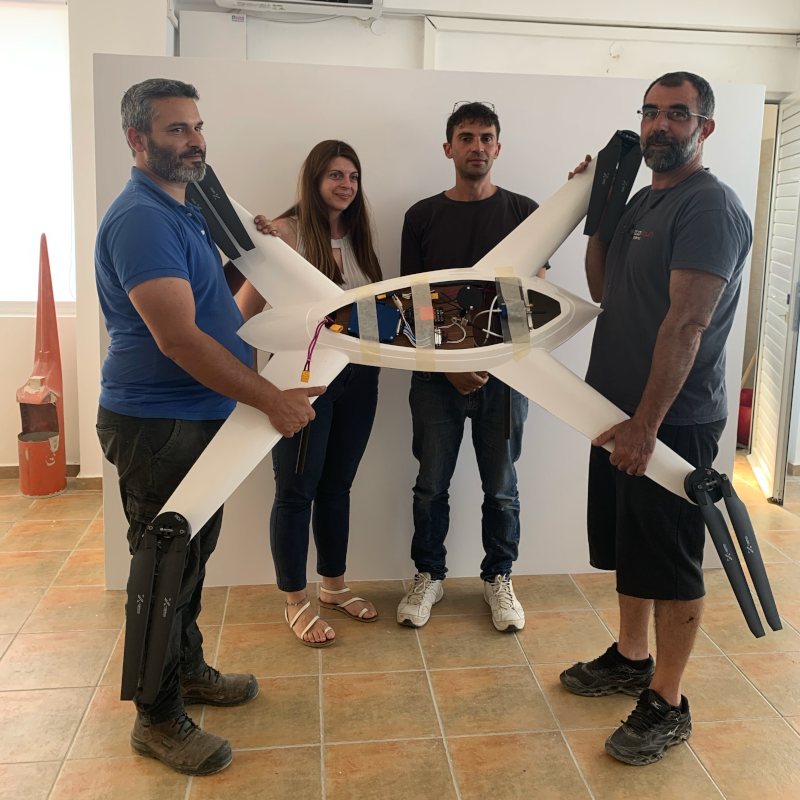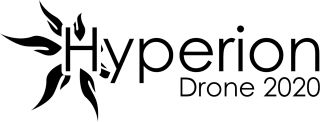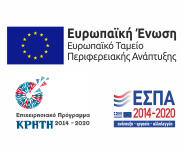Blog
- Γράφτηκε από τον/την Super User
- Γράφτηκε από τον/την Super User
- Γράφτηκε από τον/την Super User
- Γράφτηκε από τον/την Super User
The first version of HYPERION's mobile interface is ready and has been distributed to partners for experimentation. For now, the mobile interface communicates with the drone via a simple UDP-based protocol.
To test communications between the mobile interface and the drone, a dummy server has also been created which implements the communications protocol and gives dummy responces to interface commands.
 |
 |
 |
| (a) | (b) | (c) |
 |
 |
 |
| (d) | (e) | (f) |
 |
 |
|
| (g) | (h) | |
- Γράφτηκε από τον/την Super User
- Γράφτηκε από τον/την Super User
- Γράφτηκε από τον/την Super User
All photovoltaic plants where examined with the use of a thermal camera in order to manually identify panels with hotsports and other problems.
Indicative color-coded thermal images of photovoltaic panels with hotspots are shown in the following photos. Yellow colored areas are areas with higher temperatures.
 |
 |
| (a) | (b) |
 |
 |
| (c) | (d) |
- Γράφτηκε από τον/την Super User
15 December 2020. First flight tests with off-the-shelf platform Matrice 600 pro.
- Γράφτηκε από τον/την Super User
- Γράφτηκε από τον/την Super User
February 2021. A variety of camera and sensor setups and custom mounting options were tested.
Custom mounting options for one or more cameras:
 |
 |
- Γράφτηκε από τον/την Super User
- Γράφτηκε από τον/την Super User
Extensive tests of vision based SLAM were conducted at the premises of FORTH. Different algorithm versions and sensor setups were tried.
 |
 |
 |
 |
- Γράφτηκε από τον/την Super User
The first version of HYPERION's desktop interface has been delivered by Pygolampis and distributed to the other partners for experimentation. The current version allows entry of the photovoltaic plant's electrical circuity (e.g. which panel belongs to which inverter and which string). Ir also allows the definition of "obstacles" (dangerous areas for the robot to avoid) and the definition of preset drone poses.
The images bellow showcase some of the functionality of the current version of the desktop interface.
 |
 |
| (a) | (b) |
 |
 |
| (c) | (d) |
 |
 |
| (e) | (f) |
- Γράφτηκε από τον/την Super User
 |
 |
- Γράφτηκε από τον/την Super User
Initial tests of the localization and mapping algorithms were curried out in two photovoltaic plants. Data were gathered using an off-the-shelf drone equipped with two embedded PCs for online computation and a variety of sterescopic camera setups.
Indicative results are shown in the pictures bellow. More information will be provided in deliverable D3.1 (Mapping and localization)
 |
 |
| Drone used for the experiments | Hardware setup |
 |
 |
| Sample map | Sample map |
- Γράφτηκε από τον/την Super User
- Γράφτηκε από τον/την Super User
D2.1 (Flying robotic platform according to the specificatios) was delivered by Aether Aeronautics on M12 (May 2021)
 |
|
 |
 |
- Γράφτηκε από τον/την Super User
- Γράφτηκε από τον/την Super User
- Γράφτηκε από τον/την Super User
 |
 |
- Γράφτηκε από τον/την Super User
Faulty panels with representative faults have been identified and collected for further testing and experimentation.
| (a) | (b) |
 |
|
| (c) | (d) |
| (e) | (f) |
| (g) | (h) |
- Γράφτηκε από τον/την Super User

- Γράφτηκε από τον/την Super User
- Γράφτηκε από τον/την Super User
Visit to Achelonaris photovoltaic plant for data gathering. A large dataset consisting of both RGB and thermal images has been collected to be used for offline testing and experimentation.
- Γράφτηκε από τον/την Super User

- Γράφτηκε από τον/την Super User
 |
 |
- Γράφτηκε από τον/την Super User
- Γράφτηκε από τον/την Super User
- Γράφτηκε από τον/την Super User
- Γράφτηκε από τον/την Super User
- Γράφτηκε από τον/την Super User
- Γράφτηκε από τον/την Super User
 |
 |
- Γράφτηκε από τον/την Super User
- Γράφτηκε από τον/την Super User
- Γράφτηκε από τον/την Super User
- Γράφτηκε από τον/την Super User
- Γράφτηκε από τον/την Super User
- Γράφτηκε από τον/την Super User
- D3.2 - Application for thermal analysis, defect recognition and splaying of chosen spots
- D3.3 - Application for problem analysis and optimization
- D4.3 - System intergation
The due date of for the following deliverables has been transfered to month 28
- D1.3 - Contact with interested orginations and companies
- D1.4 - Dissemination of project results to the scientific community
- D4.4 - field trials and system demonstration
- D4.4 - Assesment
- D1.2 - Final project report
- Γράφτηκε από τον/την Super User
15 June 2022. Flight tests for fine tuning of the platform and the control software.
 |
 |
- Γράφτηκε από τον/την Super User
On August 20th, field triaks under strong wind were conducted. The platform maintained its
stability under all circumstances.
 |
 |
- Γράφτηκε από τον/την Super User
- Γράφτηκε από τον/την Super User
On July 20th, flight tests with load extending 10 meters bellow the aerial vehicle were conducted to ensure the stability of the ronotic platform and the control software under difficult situations.
 |
 |
- Γράφτηκε από τον/την Super User
- Γράφτηκε από τον/την Super User
The final field trials and the demonstration of the project results took place during month 28 (Sep 2022). The results are summarized in Deliverable D4.4 (Field trials and demonstration).
Drones used for the final file trils:
 |
 |
 |
"Achelonaris" plant, used for the final field trials:
 |
 |
Mapping results and manifold of robot poses:
 |
 |
Drone performing inspection routine above "Achelonaris" plant (photo and interface capture):
 |
 |
RGB and thermal images of panel with hotspot, before and after cleaning:
 |
 |
 |
 |
Diagnosis and optimization results:
 |
 |
- Γράφτηκε από τον/την Super User
- D1.3 - Contact with interested orginations and companies
- D1.4 - Dissemination of project results to the scientific community
- D4.4 - field trials and system demonstration
- D4.4 - Assesment
- D1.2 - Final project report
- Γράφτηκε από τον/την Super User

 Ελληνικά
Ελληνικά  English
English 

